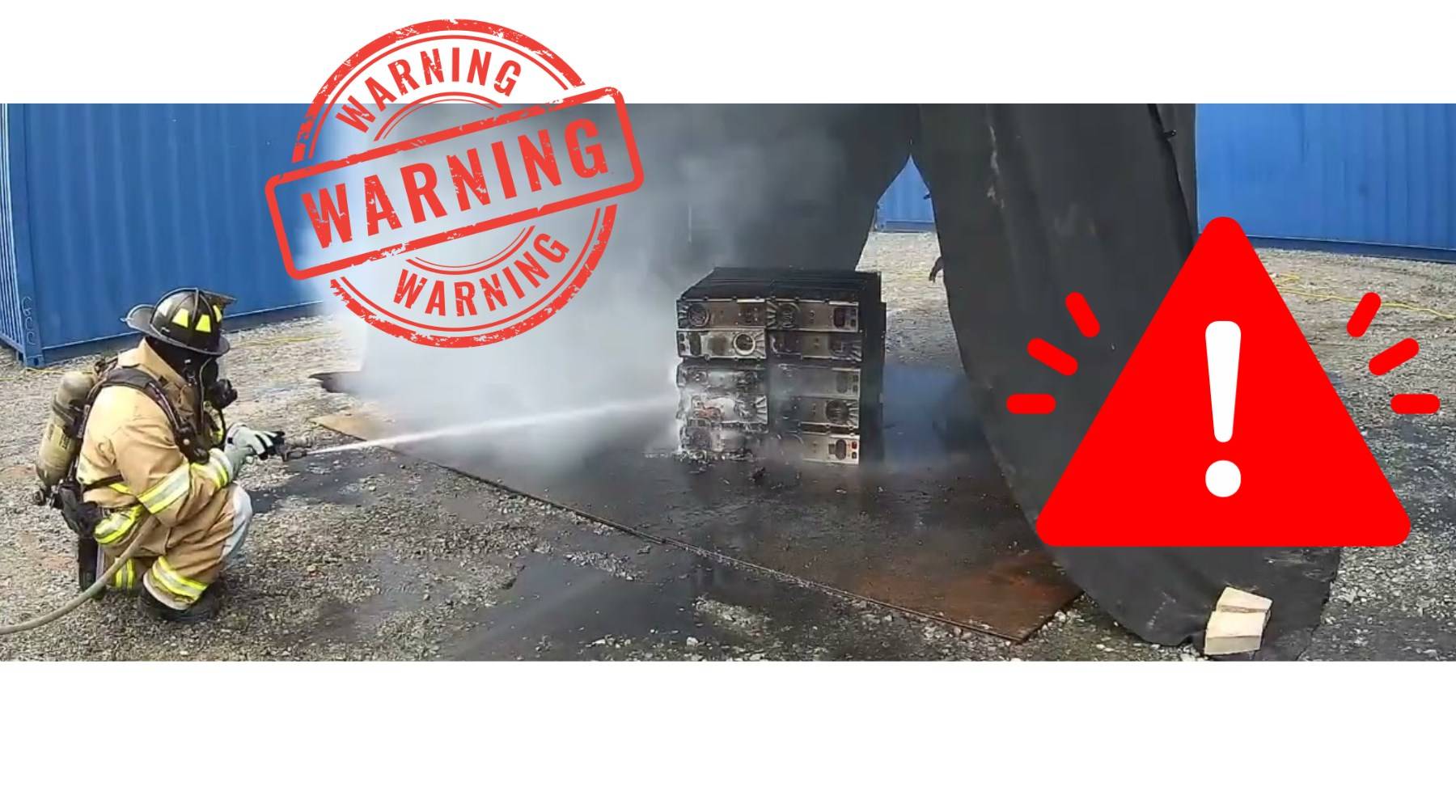In the contemporary landscape of technology and energy, lithium-ion batteries stand as a monumental advancement. They power everything from smartphones and laptops to electric vehicles and renewable energy storage systems. However, despite their numerous benefits, these batteries are not without risk. Lithium-ion batteries can pose significant fire hazards if not managed correctly, necessitating stringent regulations to ensure their safe use and disposal. This article explores the inherent risks associated with lithium-ion batteries and advocates for stricter regulatory measures to mitigate these dangers.
Understanding the Fire Risks of Lithium-Ion Batteries
Lithium-ion batteries, while incredibly efficient, contain highly reactive materials that can lead to dangerous situations if compromised. The key risks associated with these batteries include:
- Thermal Runaway: One of the most significant dangers is thermal runaway, a chain reaction within the battery that leads to rapid and uncontrollable increases in temperature. This phenomenon can cause the battery to catch fire or even explode. Thermal runaway is often triggered by external damage, manufacturing defects, or improper charging.
- Short Circuits: Internal short circuits can occur if the battery’s separators become damaged or if there is a manufacturing flaw. This can lead to excessive heat generation, which might result in fires or explosions. Short circuits are particularly hazardous as they can cause a cascade of failures within the battery pack.
- Overcharging: Lithium-ion batteries are designed to be charged within a specific voltage range. Overcharging can cause the battery’s internal components to break down, leading to excessive heat and potentially causing fires. Advanced battery management systems are used to prevent overcharging, but failures in these systems can still pose risks.
Key Incidents Highlighting the Risks
Several high-profile incidents underscore the potential dangers associated with lithium-ion batteries:
- Samsung Galaxy Note 7 Recall: In 2016, Samsung faced a massive recall of the Galaxy Note 7 due to battery defects that led to overheating and fires. This incident highlighted the risks of thermal runaway and the importance of rigorous quality control in battery manufacturing.
- Hoverboard Fires: The popularity of hoverboards, particularly around the 2015 holiday season, was marred by numerous reports of fires caused by defective lithium-ion batteries. These incidents led to increased scrutiny and calls for better safety standards.
- Electric Vehicle Fires: While electric vehicles (EVs) offer an eco-friendly alternative to traditional combustion engines, there have been cases where lithium-ion batteries in EVs have caught fire. Such events have drawn attention to the need for improved safety measures in battery design and maintenance.
The Need for Stricter Regulations
To address the fire risks associated with lithium-ion batteries, it is imperative to enforce stricter regulations. Key areas of focus should include:
1. Enhanced Manufacturing Standards
Manufacturers must adhere to stringent quality control processes to prevent defects that could lead to battery malfunctions. Regulatory bodies should mandate comprehensive testing for all lithium-ion batteries, including stress tests for thermal runaway and short circuits. Establishing and enforcing high manufacturing standards will significantly reduce the likelihood of defects that can lead to fires.
2. Improved Battery Management Systems
Battery management systems (BMS) are crucial for ensuring the safe operation of lithium-ion batteries. Regulations should require advanced BMS technology that can effectively monitor battery health, prevent overcharging, and manage temperature fluctuations. Regular updates to BMS software and hardware standards can help mitigate risks associated with battery failures.
3. Rigorous Safety Testing
All lithium-ion batteries should undergo rigorous safety testing before reaching the consumer market. This includes testing for thermal stability, short-circuit protection, and durability under various environmental conditions. Ensuring that batteries meet high safety standards will help prevent incidents of overheating and fires.
4. Safe Disposal and Recycling Protocols
Proper disposal and recycling of lithium-ion batteries are essential for reducing environmental and safety risks. Regulations should mandate specific disposal procedures and recycling processes to prevent batteries from ending up in landfills, where they can pose fire risks. Encouraging or requiring consumers to use certified recycling programs will help ensure safe handling of end-of-life batteries.
5. Public Awareness and Education
Raising awareness about the risks associated with lithium-ion batteries is crucial. Public education campaigns should inform consumers about safe charging practices, proper disposal methods, and how to recognize signs of battery issues. Empowering individuals with knowledge will help prevent accidents and ensure that batteries are used and disposed of safely.
International Regulatory Frameworks
Countries around the world have started to address the risks associated with lithium-ion batteries through various regulations and standards:
- UN Recommendations on the Transport of Dangerous Goods: These guidelines include specific requirements for the transport of lithium-ion batteries, including packaging and labeling standards to prevent accidents during shipping.
- European Union Regulations: The EU has implemented regulations to ensure the safe use and disposal of batteries, including the Battery Directive, which sets out requirements for collection, recycling, and treatment of batteries.
- U.S. Regulations: In the United States, agencies like the Consumer Product Safety Commission (CPSC) and the Department of Transportation (DOT) oversee battery safety standards and regulations for transportation.
Conclusion
Lithium-ion batteries represent a remarkable technological advancement with numerous benefits, but their associated fire risks cannot be overlooked. By implementing stricter regulations, enhancing manufacturing standards, improving battery management systems, and promoting safe disposal practices, we can significantly mitigate these risks. It is essential for regulators, manufacturers, and consumers to work together to ensure that lithium-ion batteries are used and managed safely. Through collective efforts and stringent regulatory measures, we can harness the benefits of lithium-ion technology while minimizing its potential hazards.



